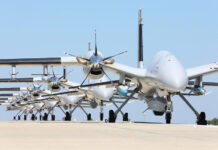 An exhaustive analysis carried out by data specialists on behalf of the UN Human Rights Office has led to the compilation of a list of 59,648 individuals reported killed in Syria between 15 March 2011 and 30 November 2012, UN High Commissioner for Human Rights Navi Pillay said on Wednesday in Geneva, Switzerland.
An exhaustive analysis carried out by data specialists on behalf of the UN Human Rights Office has led to the compilation of a list of 59,648 individuals reported killed in Syria between 15 March 2011 and 30 November 2012, UN High Commissioner for Human Rights Navi Pillay said on Wednesday in Geneva, Switzerland.
The death toll estimated by the U.N. is a third more than the figure of 45,000 given by activists opposed to the regime of President Bashar Assad. This report is the first independent assessment by an acclaimed international body that estimates the death toll in Syria higher than the rebel’s claims. It comes as activists report that a Syrian warplane blasted a gas station near Damascus on Wednesday, killing and wounding dozens of people and igniting a huge fire in what could be one of the bloodiest attacks in weeks during the 22-month conflict. According to the London-based Syrian Network for Human Rights 36,332 Syrian citizens were killed during 2012 – an average of 101 citizens killed every day or four every hour.
“Given there has been no let-up in the conflict since the end of November, we can assume that more than 60,000 people have been killed by the beginning of 2013,” Pillay said. “The number of casualties is much higher than we expected, and is truly shocking.”
The analysts noted that 60,000 is likely to be an underestimate of the actual number of deaths. The preliminary analysis, which took five months to complete, was conducted using a combined list of 147,349 reported killings, fully identified by the first and last name of the victim, as well as the date and location of the death. By removing duplicates they arrived at a list of 59,648 individuals killed between the start of the uprising on March 15, 2011, and Nov. 30, 2012.
The data, which didn’t distinguish among soldiers, rebels and civilians, also show that the killing in Syria has accelerated. During the summer of 2011, shortly after the uprising against Assad began, the monthly death toll stood at around 1,000. A year later, an average of 5,000 were killed each month, the U.N. said. Most of the killings occurred in Homs, followed by rural Damascus, Idlib, Aleppo, Daraa and Hama. At least three quarters of the victims were male.
“While many details remain unclear, there can be no justification for the massive scale of the killing highlighted by this analysis,” the High Commissioner said. “Unless there is a quick resolution to the conflict, I fear thousands more will die or suffer terrible injuries as a result of those who harbour the obstinate belief that something can be achieved by more bloodshed, more torture and more mindless destruction. Those people carrying out these serious crimes should understand that they will one day be brought to justice. The case against them will only be strengthened by adding more crimes to those already committed.”
“The failure of the international community, in particular the Security Council, to take concrete actions to stop the blood-letting, shames us all,” Pillay said. “For almost two years now, my staff and the staff of the independent Commission of Inquiry have been interviewing Syrians inside and outside the country, listening to their stories and gathering evidence. We have been repeatedly asked: ‘Where is the international community? Why aren’t you acting to stop this slaughter?’ We have no satisfactory answer to those questions. Collectively, we have fiddled at the edges while Syria burns.”
A Year After US Withdrawal – Iraq is Officially Fighting a Domestic War
While violence in Syria is escalating, Iraq is not standing still and while the domestic war there has calmed down in 2012, data released on January 1, 2013 showed the country is still embroiled in ‘low intensity war’, waged by Suni-Shiite insurgents. The report comes after the first full year since American forces completed their withdrawal in December 2011. The monthly death toll was near 2012’s low of 136 set in October but in recent weeks escalated violence and attacks reaffirmed the war is still on.
Data released by Iraq’s ministries of health, interior and defense said 2,174 people were killed throughout 2012, sharply lower than in previous years, particularly compared to the height of the country’s brutal sectarian war from 2005 to 2008 when tens of thousands were killed. But Britain-based monitor group Iraq Body Count put the overall death toll at 4,471, more than double the official figures, though the last three months of 2012 represented a record low. “2012 has been more consistent with an entrenched conflict than with any transformation in the security situation for Iraqis in the first year since the formal withdrawal of US troops,” the monitor group said.
Since the US troops withdrawal in December 2011, a small contingent of around 150 soldiers remains as part of a bilateral agreement to help train and supply Iraq’s security forces. Baghdad’s police and military are widely agreed to be largely able to maintain internal security, but are not expected to be fully capable of defending Iraq’s borders, airspace and waters until 2020.
















